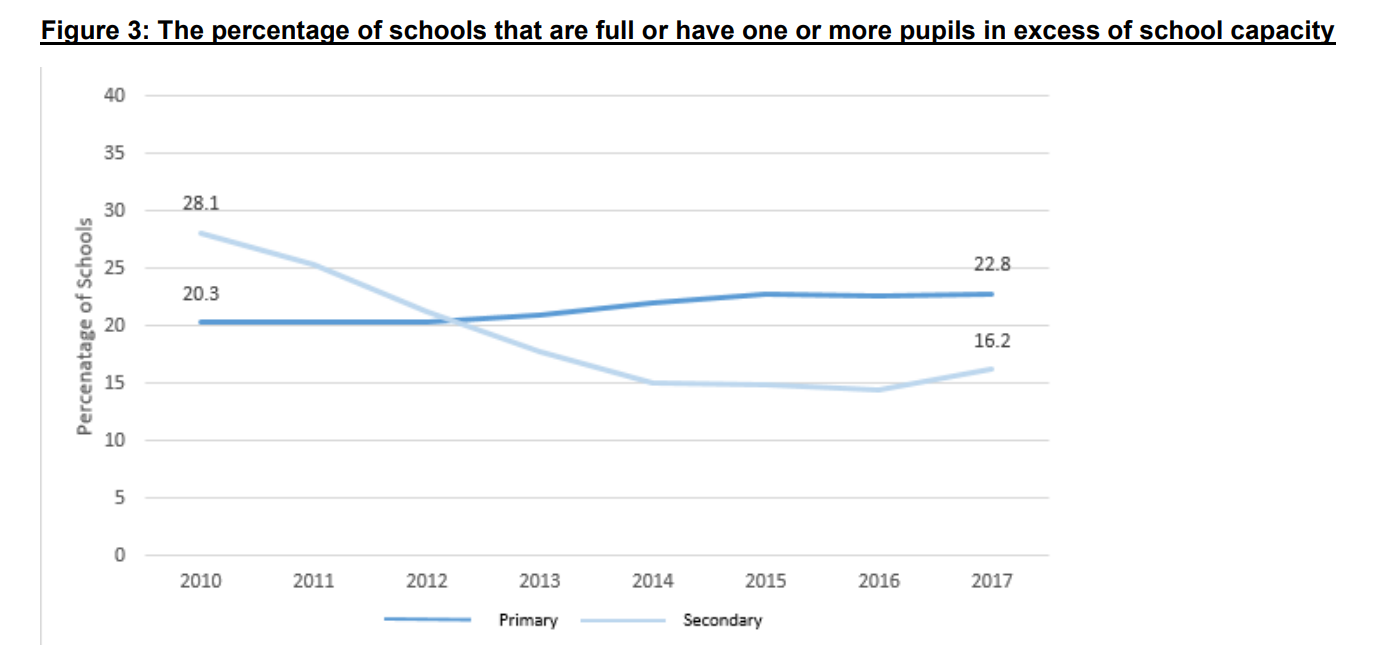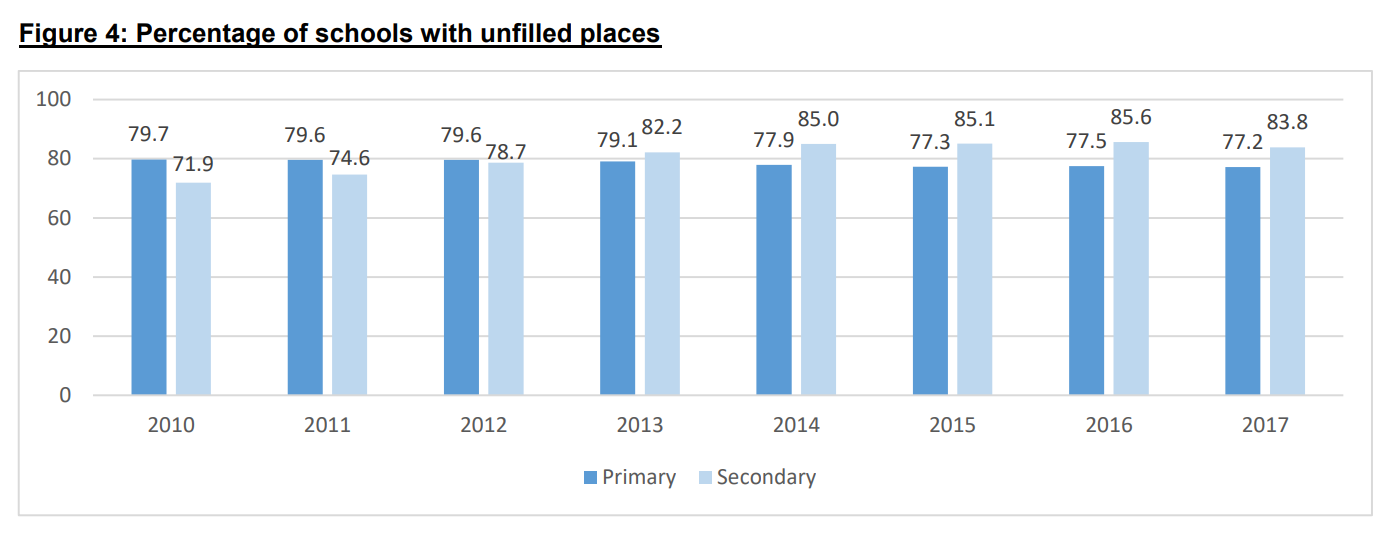The proportion of secondary schools that are full or over capacity has risen for the first time in at least seven years.
Government statistics released this morning show that 16.2 per cent of secondary schools were full or over-capacity in 2017, up from 14.4 per cent in 2016, a rise of 12.5 per cent.
The increases reverses a steady decrease in the proportion of full secondary schools since 2010, when 28.1 per cent were at or over capacity.
Last year, 22.8 per cent of primary schools were full or over-capacity, up slightly from 22.5 per cent in 2016.
Schools are currently seeing a population bulge caused by an increase in the birth rate in the early 2000s transfer from primary to secondary education. The number of secondary school pupils is expected to rise by 19 per cent between 2017 and 2025.
Today’s statistics also show an increase in the number of unfilled places in secondary schools, but a decrease in the number at primary, the first since 2012.
There were 638,000 unfilled places in secondary schools in 2017, equivalent to 16.7 per cent of total places. This is an increase in number from 636,000 in 2016, but a decrease in proportion of total places, from 16.8 per cent.
In 2017, there were 453,000 unfilled places at primary schools, equivalent to 9.4 per cent of total places, down from 461,000, or 9.7 per cent, in 2016.
The proportion of schools with unfilled places has been gradually decreasing at primary level and gradually increasing at secondary level since 2010. As of last May, 77.2 per cent of primary schools and 83.8 per cent of secondary schools had one or more unfilled places.
According to the government, unfilled places can be evidence of local authorities planning ahead for future need.
Unfilled places “can also be attributed to the building of whole new schools, which fill up from the bottom, leaving space in the upper years until those year groups work their way through”.
“In some areas, low or declining need for places will also contribute to the number of unfilled places.”










Your thoughts